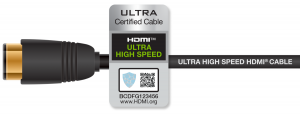Potentially stupid question: What's the "correct" setting for connecting to a PC via HDMI 2.0 @ 4k60:
A: RGB 8-bit, Full dynamic range
B: YCbCr 4:2:2 10-bit
On my B6, I find option A works better when the display is set to PC mode (which makes sense, since that tells the TV to expect a RGB signal), and I'm wondering if the same is true for the C9/CX series. When I try option B, I simply run into too many issues with black levels and text readability.
A: RGB 8-bit, Full dynamic range
B: YCbCr 4:2:2 10-bit
On my B6, I find option A works better when the display is set to PC mode (which makes sense, since that tells the TV to expect a RGB signal), and I'm wondering if the same is true for the C9/CX series. When I try option B, I simply run into too many issues with black levels and text readability.
![[H]ard|Forum](/styles/hardforum/xenforo/logo_dark.png)
